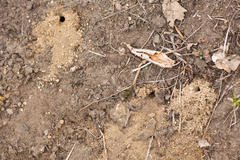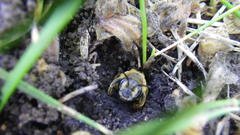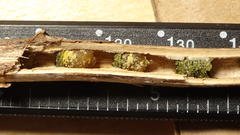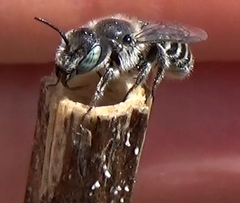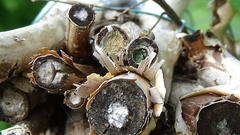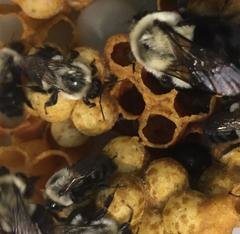Ground Nesting Bees
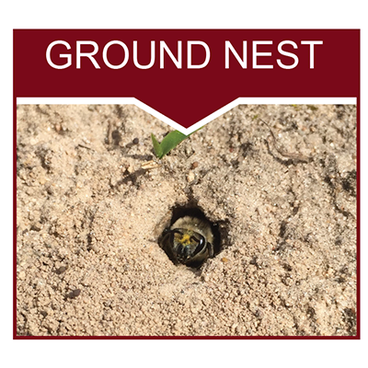
Most bees (between 60 and 70%) dig burrows in the ground. These bees are very diverse and have diverse preferences. Providing both disturbed and undisturbed soil, covered and bare soil, and keeping pesticides away from areas where you notice nesting activity can help these bees thrive. Most of these bees are extremely gentle and only active as adults for a few weeks every year, so even in high traffic areas, you can leave nests and not worry about stings.
Cavity Nesting Bees
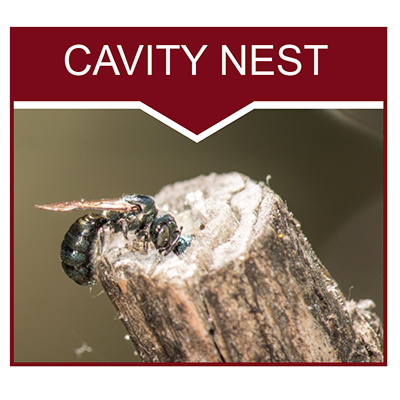
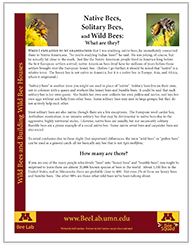
The other 30-40%, the cavity-nesting bees, use hollow plant stems or holes in wood left by wood-boring beetles, instead of digging their own tunnel in the ground. A nesting bee will use mud, leaves, or another material to build walls and divide the tunnel into a linear series of small, sealed cells. Each cell contains a lump of pollen and an egg, which usually takes one year to develop into an adult bee and the cycle can begin anew. You can attract cavity-nesting bees by providing tunnels in a man-made structure called a bee house—like a bird house for bees. Three common types of bee house are stick bundles, wood blocks and observation blocks. If you would like to observe native bee nesting, you can construct your own nests for cavity nesting bees. Please note that these nests need maintenance otherwise they can cause more harm than good. Learn about wild bee diversity and how to attract them to your garden or farm by providing nesting habitat in this beautiful pamphlet written by Joel Gardner.
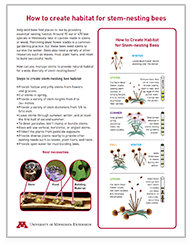
|
The Bee Real, Bee Everywhere project
The Bee Real, Bee Everywhere project is an interdisciplinary collaboration between researcher Colleen Satyshur and artists Christine Baumler, Amanda Lovelee, and Julie Benda. Imagined as an experiment in providing places for bees to thrive in urban environments, four floating bee “skyrises” house removable cavity-nesting bee blocks. The blocks are arranged in the sculptures to create a comparison between East and South facing blocks and nest holes of different sizes.
Bumble Bee Nests
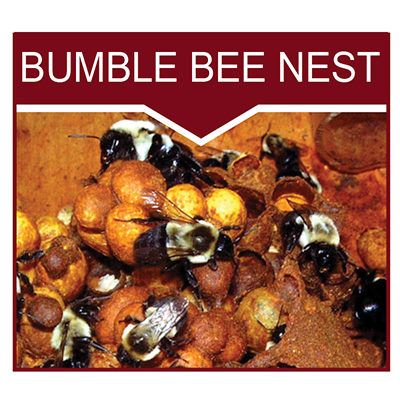
Bumble bees are a bit different. The basics of what they need are a sheltered space with insulating material. In your yard, this can be a compost pile, piles of dried grass at the base of native grasses, or a raised bed that has sticks and logs at the base (look up hugelkultur to learn more). If you are able to leave leaves on the ground and add some logs to leave to rot, they seem to be attracted to those. Some people do make houses that bumble bees can use for nesting. People who put out houses have a 0-10% success rate so it may not be worth the effort compared to habitat creation.
If you would like to try, the Bumble Bee Conservation Trust has created a guide: Making a bumble bee nest
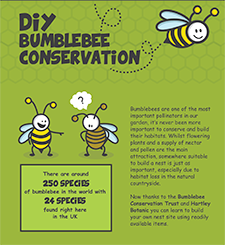
What to do when you find a bumble bee nest
- Observe the bees from a safe distance
- Confirm that it is a bumble bee nest by submitting clear photos of the bees to Bumble Bee Watch or iNaturalist.
- Do not disturb the soils or other features if possible (by the time you find the nest, it may be almost finished)
- Do not try to move or relocate the nest, but let it run its course, if possible
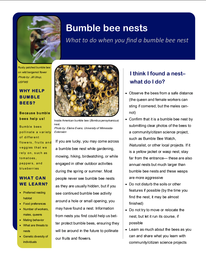
What do you do when you find a bumble bee nest .pdf

